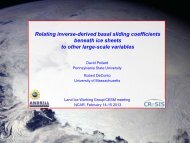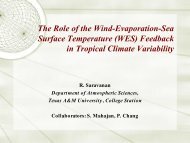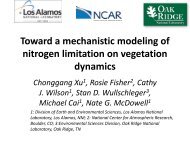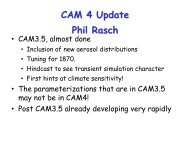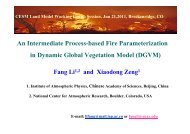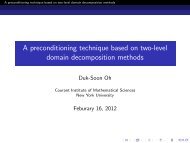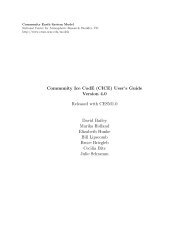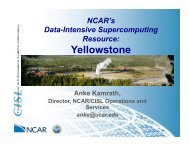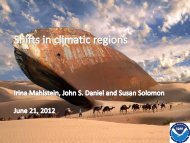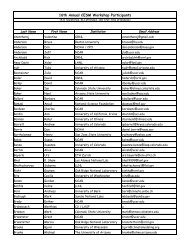Modeling spatial population scenarios
Modeling spatial population scenarios
Modeling spatial population scenarios
Create successful ePaper yourself
Turn your PDF publications into a flip-book with our unique Google optimized e-Paper software.
Methodological Changes: Findings and Implications<br />
• The adjustments did produce improvements in the right direction, however not<br />
at the level necessary to eliminate the issues that have been identified.<br />
• Urban <strong>population</strong> allocation is more concentrated.<br />
• Rural <strong>population</strong> growth is more concentrated in areas adjacent to urban<br />
centers, while <strong>population</strong> loss is more concentrated in remote areas.<br />
• The model projected both growth and decline within the rural region over the<br />
entire period.<br />
• However, <strong>population</strong> growth in rural cells was still too small to allow any of them<br />
to reach the density threshold necessary for reclassification.<br />
• The initial urban/rural classification (and rule for re-classification over time)<br />
appears to remain the largest factor affecting <strong>population</strong> change.



